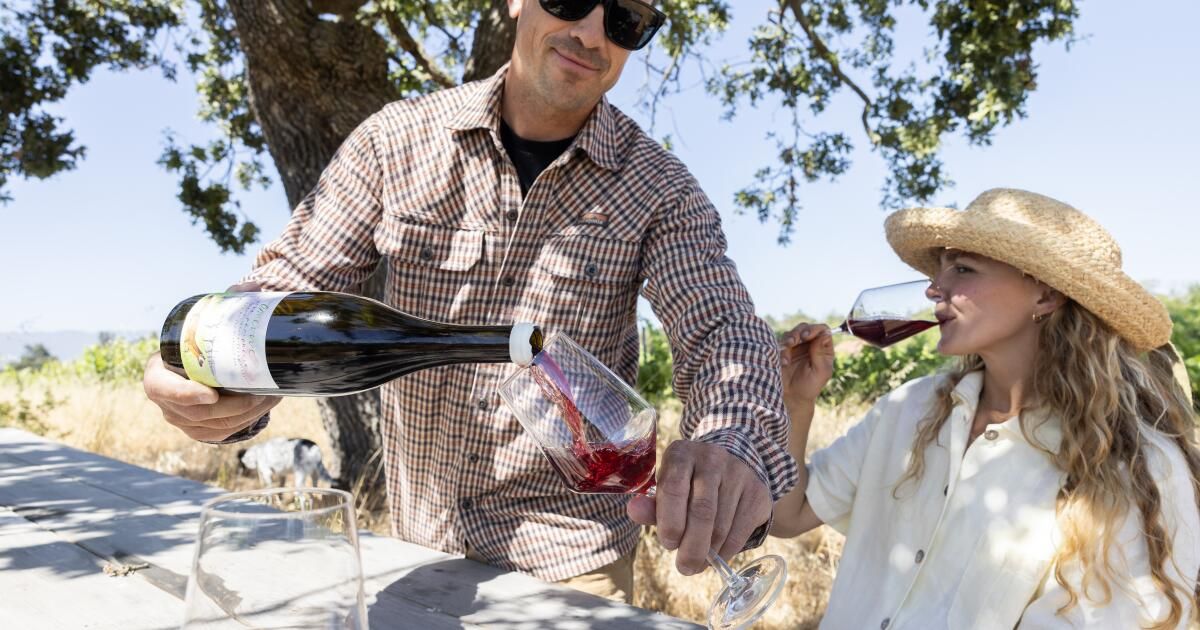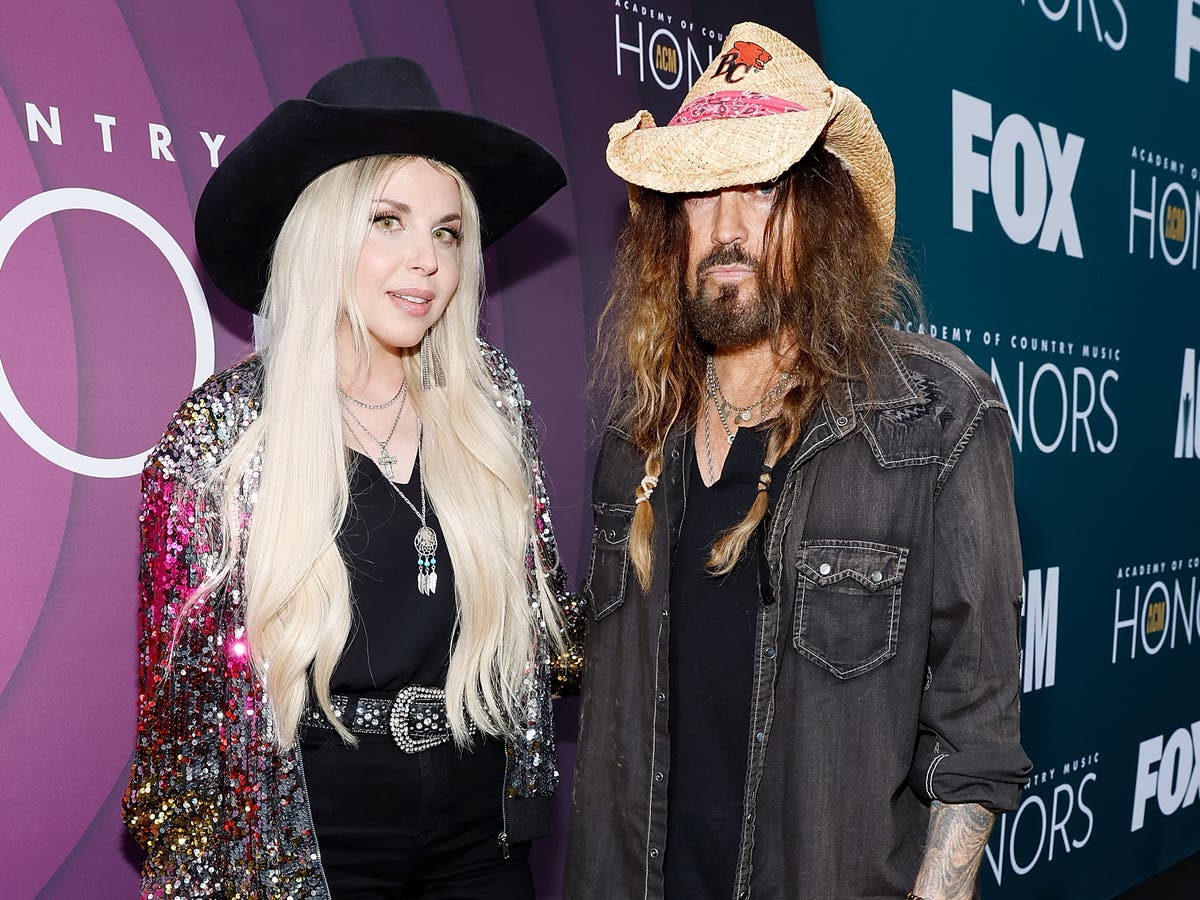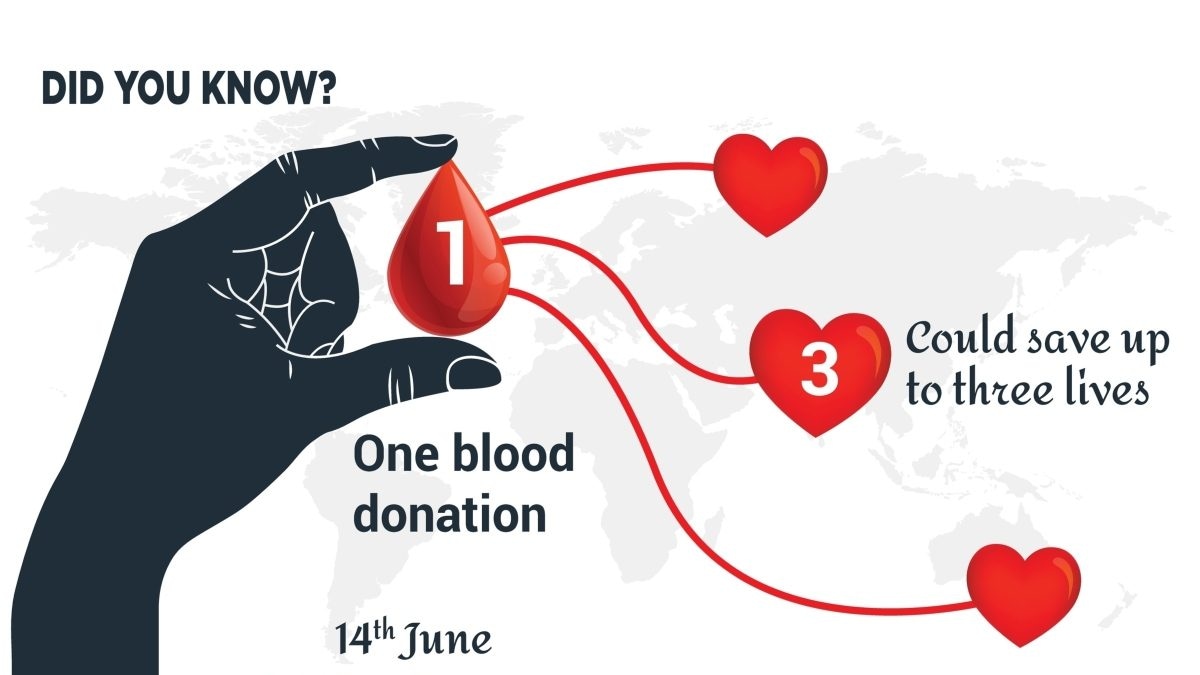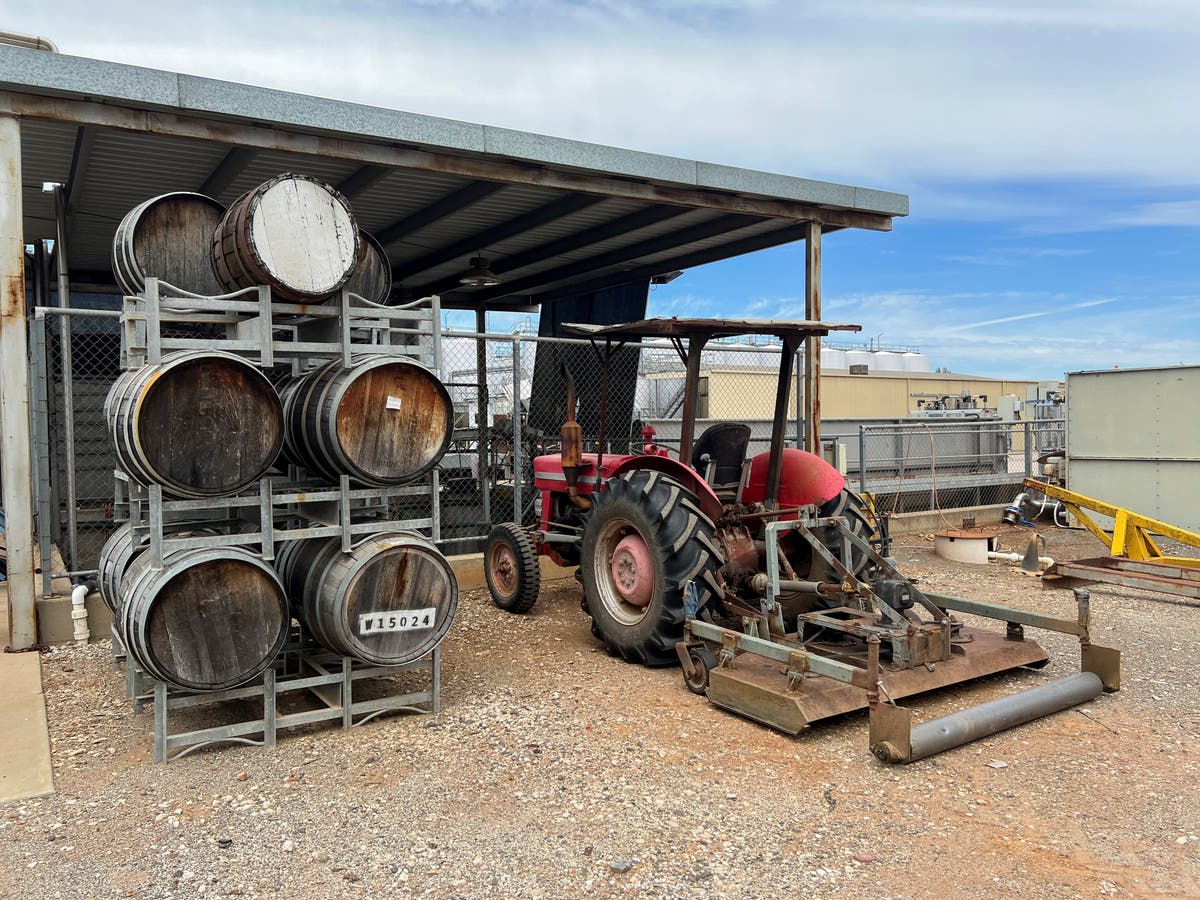In the pastoral patchwork of vineyards west of Highway 154, winemaker Alice Anderson and her partner, Topher De Felice, cultivate a historic 10-acre property with the help of their small herd of animals, growing grapes for some of California’s most uniquely expressive wines.
The way Anderson and his flock — a menagerie that includes ducks, chickens, 15 head of sheep and a rescued dog — approach their work goes beyond what would be considered organic, embracing the mystical rituals of biodynamics and arguably being called regenerative, a buzzword that is not without controversy.
But some experts say a broad and immediate commitment to responsible farming practices could go a long way toward mitigating the environmental challenges posed by climate change, soil erosion, declining rainfall and any of the numerous grapevine diseases that can be devastating. Studies show we could lose grape crops in California and elsewhere by the end of the century.
“The way we manage soil, water and biodiversity as a bottomless expense account has come to an end,” says Oregon viticulturist and winemaker Mimi Casteel, one of the leading minds behind the movement toward responsible grape farming. “We are in the final decades of the vast majority of our agricultural soils if a very drastic change is not made yesterday.”
Among those at the forefront of change are Anderson and De Felice, who began farming the Ibarra-Young Vineyard four years ago, adopting intensely holistic methods.
Many of the wine industry’s leading voices, including Casteel, are reluctant to codify or define regenerative viticulture. The fear is that an existential imperative will become a “green” marketing tool lacking substance and the desired impact.
Alice Anderson at the vineyard known as Ibarra-Young, one of the first in the Los Olivos region. Here, iconic winemaker Bob Lindquist grew grapes associated with France’s Rhône Valley, such as Syrah, Grenache and Viognier.
No matter what it's called, “the goal is to create a system that sustains itself,” Anderson says.
For Anderson, that system necessarily includes the integration of animals, cover crops between the rows of vines, and a firm commitment to no-till agriculture. These practices help develop a potent yeast population entirely specific to Ibarra-Young, which Anderson relies on to fuel his fermentations. As a result, the wines vibrantly display the vineyard’s unique DNA as opposed to the anonymous fingerprint of commercial yeast.
If “terroir,” the inherent characteristics of a particular vineyard, drives your interest in wine, Anderson says sites farmed this way can produce wines that express their “existence” more fully and dynamically.
A legendary vineyard
Planted in 1971, Ibarra-Young was one of Santa Barbara County’s first vineyards. Iconic winemaker Bob Lindquist, who paved the way for wines produced from grapes traditionally associated with France’s Rhône Valley, farmed here from the mid-1980s until 2018. His commitment to grapes like Syrah, Grenache and Viognier launched that category and set its benchmarks, resulting in a body of work that stands as some of the most important in the region’s history.
Now, the baton has been passed to Anderson, who has held the lease since 2020. Together with De Felice, she makes wine under the label Âmevive, a whimsical mix of words she defines as “living soul.” Âmevive has quickly been recognized by the wine community for its work, appearing on store shelves and wine lists across the country.
Growing to create a system that restores, rebuilds and nourishes your environment does not simply mean having animals on the property, Anderson says. It means developing a symbiotic relationship with them.
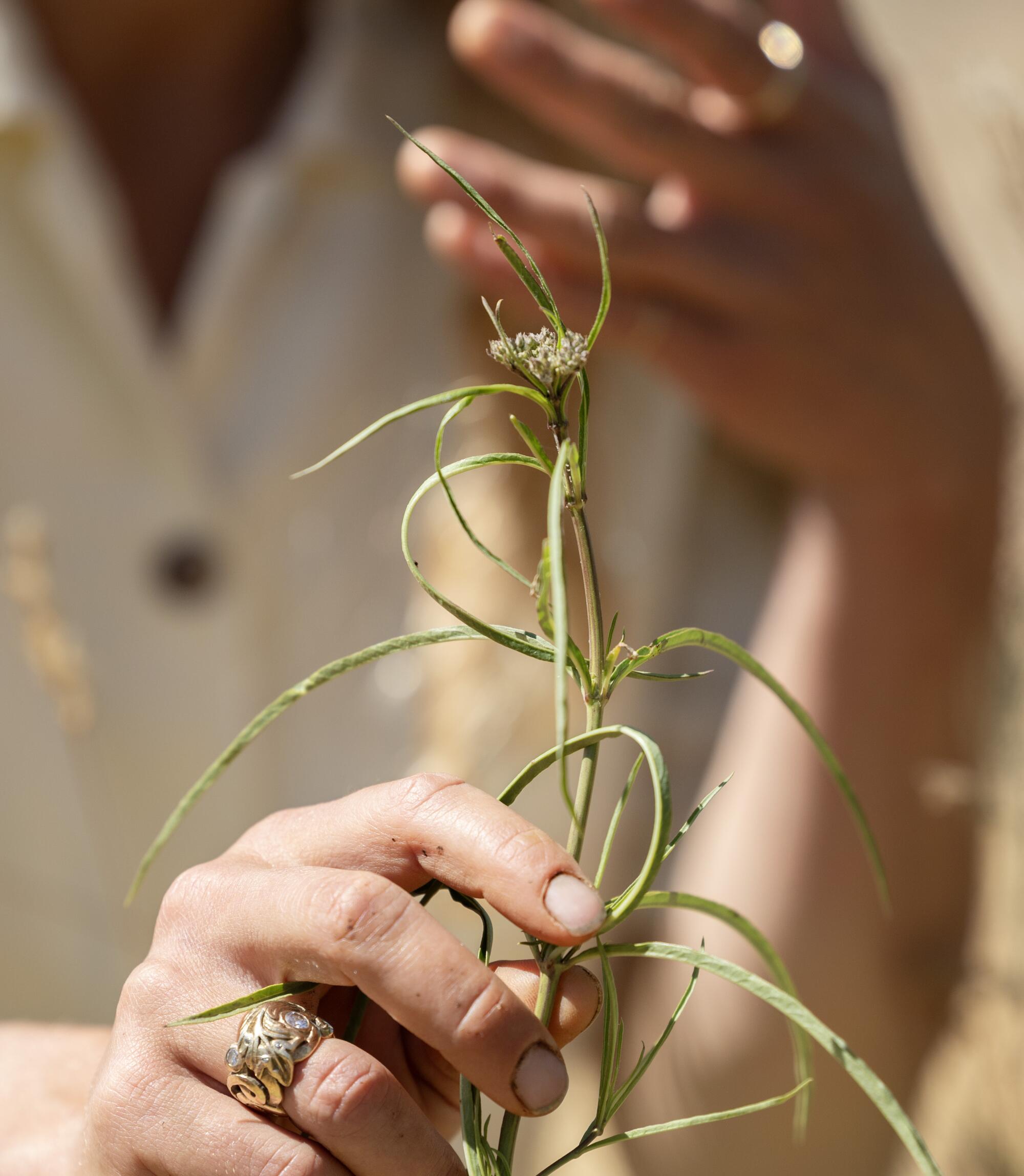
Cover crops such as narrow-leaf milkweed, food for the monarch butterfly, grow between the rows of grapes at the Âmevive vineyard in Los Olivos.
“I think the working bond between humans and animals can be very powerful. The energy that is created in a bond like that would certainly carry over into the vineyard,” says Anderson.
Each species grazes the vineyard with its own particular approach, avoiding the need for a diesel-guzzling tractor, eliminating unwanted pests and depositing manure as a natural fertilizer.
“I love having different species,” Anderson says. “There’s diversity in microbiomes. The more microbial diversity you have, the more diversity of nutrients you have for your plant. So if you’re feeding your soil and improving its health, you’re increasing the nutrient density, the life potential of everything that’s growing above ground.”
“And when you support this through composting, spraying compost tea, and using only holistic products, you create a closed, self-sustaining system.”
Their compost pile is a sight to behold, fed almost entirely with material from the property. In turn, composting makes these ingredients bioavailable and nutritious for the soil.
“We take all our canes out of the pruning season and cut them up, and that is a great source of carbon. We bring the pomace [stems, seeds and grape skins] from the winery to the vineyard for composting. It is an important component of nitrogen and microbes.”
All chicken manure in the poultry house is also an important nitrogen component. It is a kind of feedback loop that returns manure, pomace and prunings to their source.
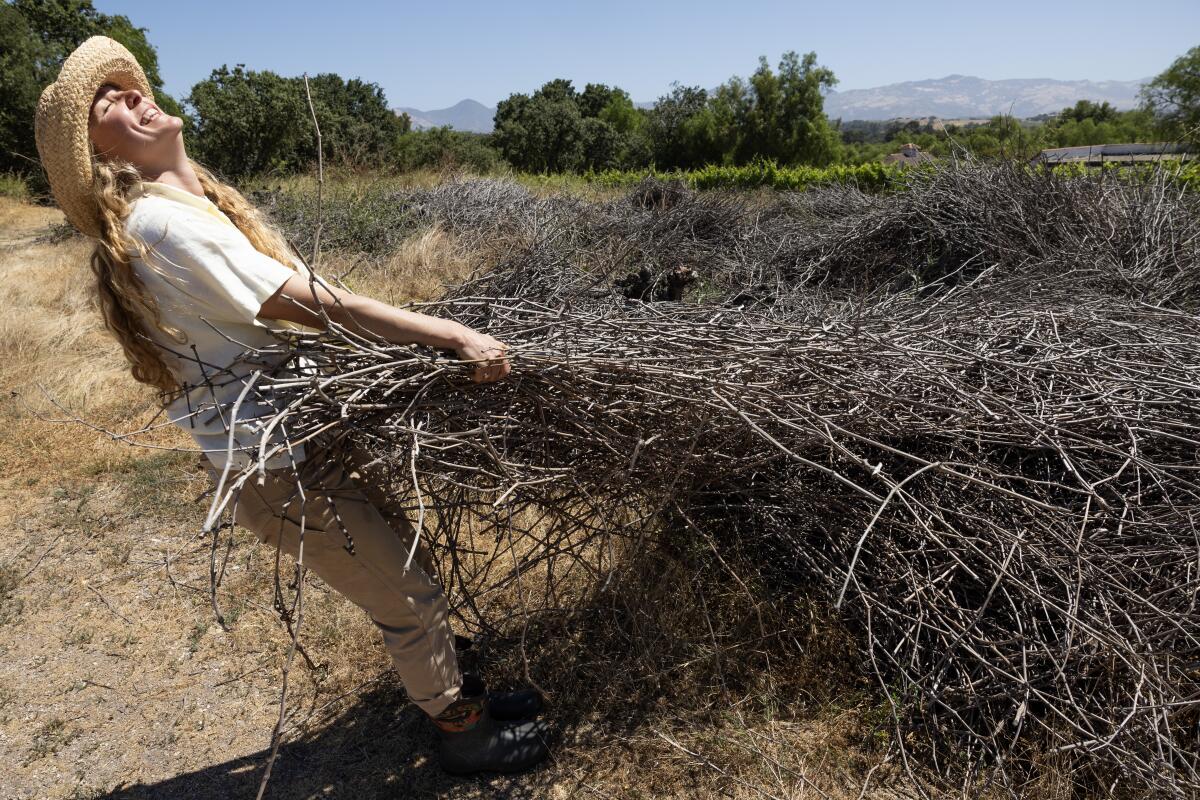
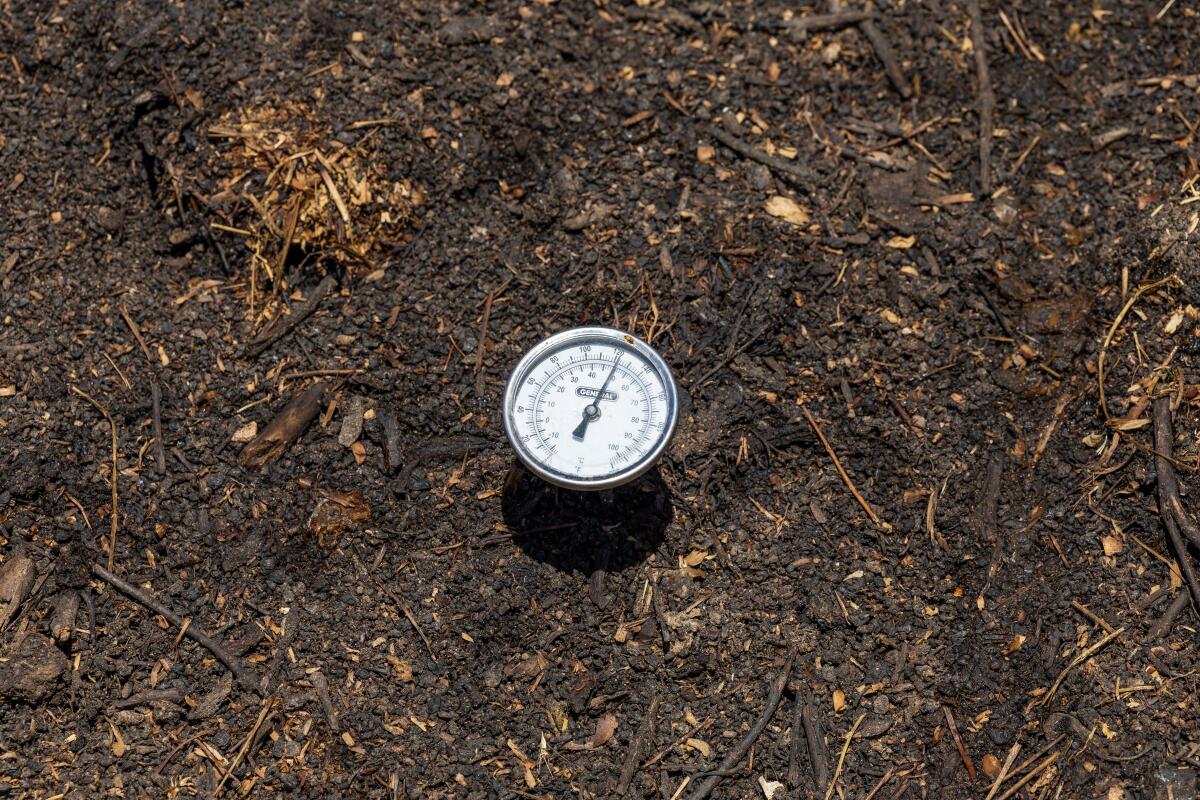
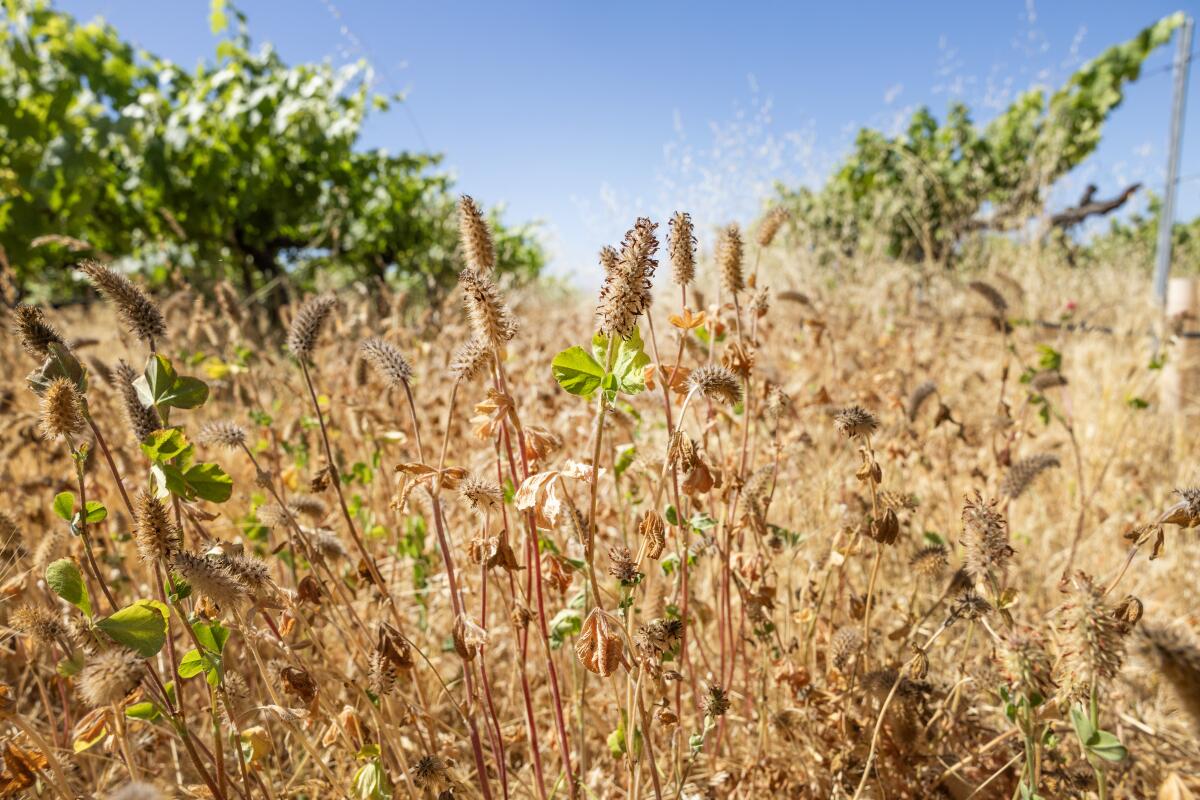
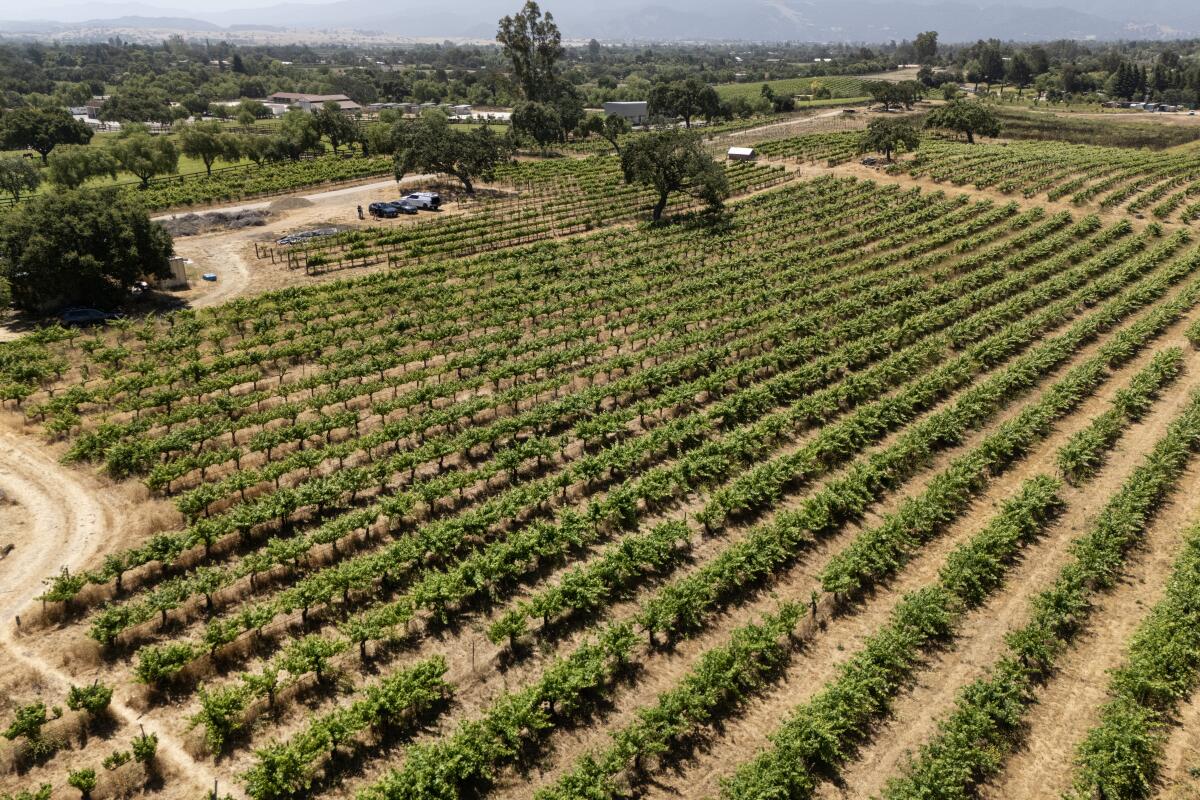
At Âmevive, vine cuttings are cut into pieces and added to the compost pile. In the picture, next to the compost pile, a thermometer measures the temperature. Below, cover crops grow between the rows of grapes. (Myung J. Chun/Los Angeles Times)
'We want a living system!'
Cover crops are another wonderful part of Anderson's program. Plants between the rows of vineyards help prevent erosion, maintain topsoil, provide nitrogen, sequester water and carbon, and attract beneficial insects.
“I plant a combination of different things every year. I haven’t planted the same species for the last four years, so I think I’ve planted 45 different species,” Anderson says. “A lot of different types of clovers, different types of peas, a lot of different types of perennial grasses and some annual grasses. A lot of different species of flowers that are native to the Santa Ynez watershed.”
Given her commitment to her vineyard’s understory, Anderson is a strong advocate of no-till farming. By leaving her soil largely untouched, she says, her cover crops and the biome beneath can thrive and develop a true “communication highway” between the various root systems.
In addition to the rows of grapevines, Anderson and De Felice have added diverse and vibrant “pollinator rows” and a new hedgerow. These provide habitat and a food source for insects and creatures that would otherwise not be able to thrive in a traditional monoculture system. Encouraging a multitude of species improves natural pest control and provides a food source for wildlife that is encouraged to live alongside the vines.
“We want a living system!” says Anderson. “Besides, seeing flowers everywhere makes me happy.”
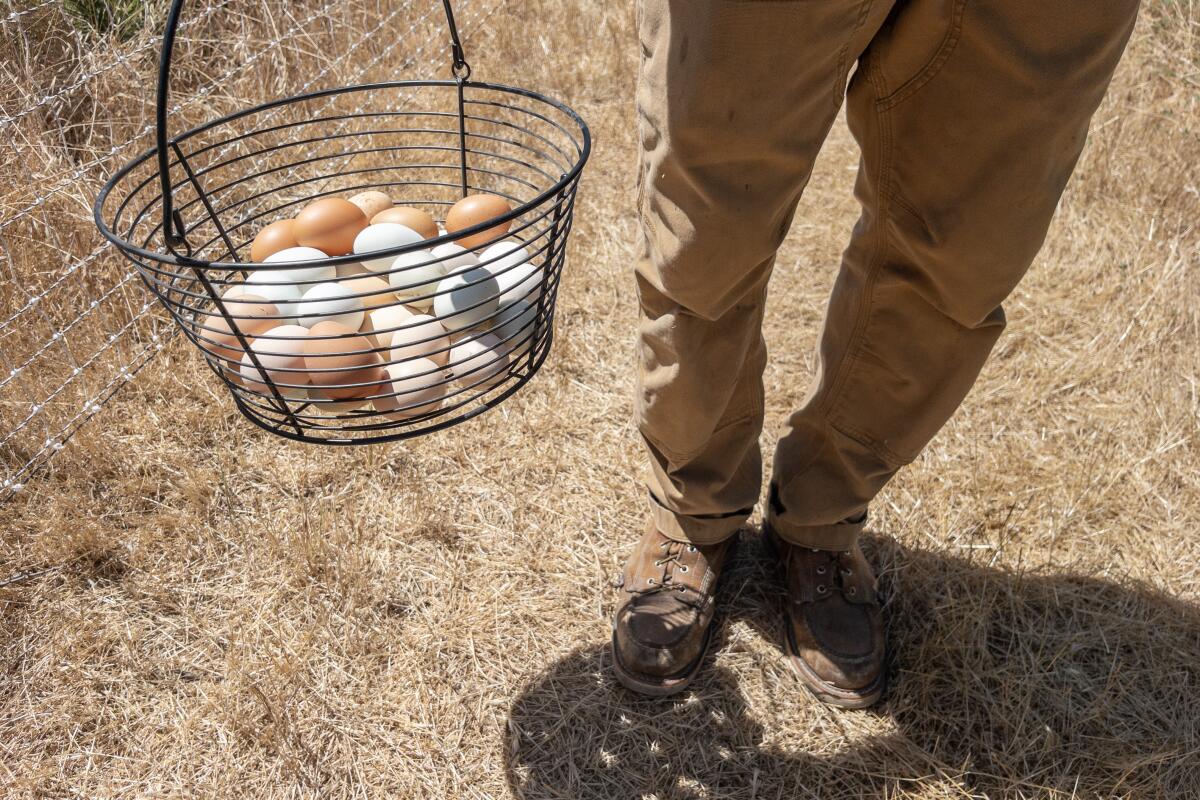
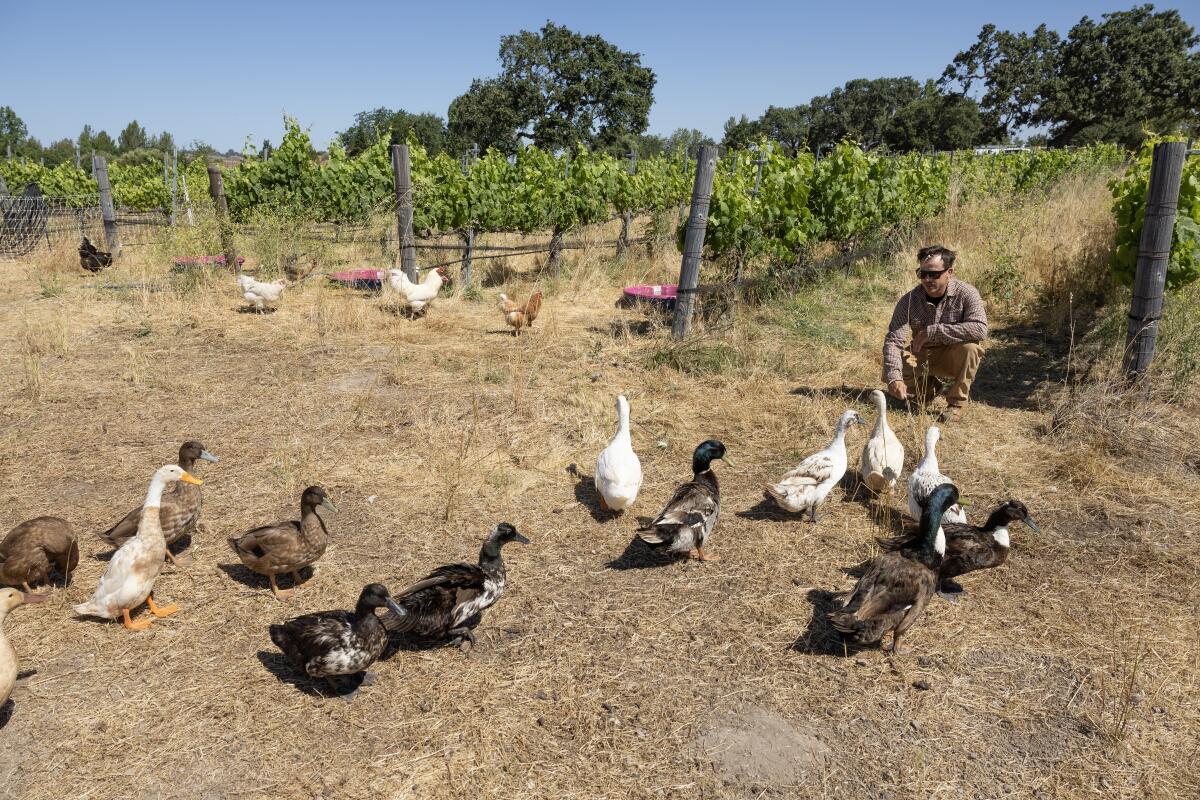
Âmevive’s hens provide fresh eggs. “I think the working bond between humans and animals can be very powerful. The energy that is created in a bond like that would certainly carry over into the vineyard,” says Anderson. (Myung J. Chun/Los Angeles Times)
Anderson’s infectiously cheerful spirit shines through as he walks through the vineyard. He beams with pride at each sprout or bulb that emerges from his new hedgerow, at the tuft of wool his grazing sheep have left dangling from a gnarled vine, at the sprouts of Spanish lotus and lupines that are native to this watershed, at the vivid marigold, which may possess properties that help control pests and pathogens.
Uncommon wines
There’s no denying the dynamism of Âmevive’s wines. They are totally transparent gateways that vividly and energetically express grape and place. With a balance that is often difficult to achieve in California wine, they are light and not lacking in complexity. The Syrah is a stunning example of the variety and a fitting homage to the land that sparked Anderson’s passion for the grape. Early in his career, he spent several vintages in the hills of the Rhône Valley in northern France, making Syrah for one of that appellation’s most renowned producers.
But Ibarra-Young’s most intrinsic expression is her “Périphérie.” She and De Felice recognized that two rows of vines on the western edge of the property, from the original 1971 plantings, were inexplicably performing in a completely different way than the rest of the vineyard. They decided to isolate those grapes — two reds and one white (Syrah, Mourvèdre and Marsanne) — and ferment them together to produce an unusual wine that ticks many seemingly contrasting boxes. It’s powerfully packed with exotic red and black fruits, yet luminous., It's well suited to a cold environment, but would be perfect with hearty meals, and despite its exuberance, it's under 13% alcohol.
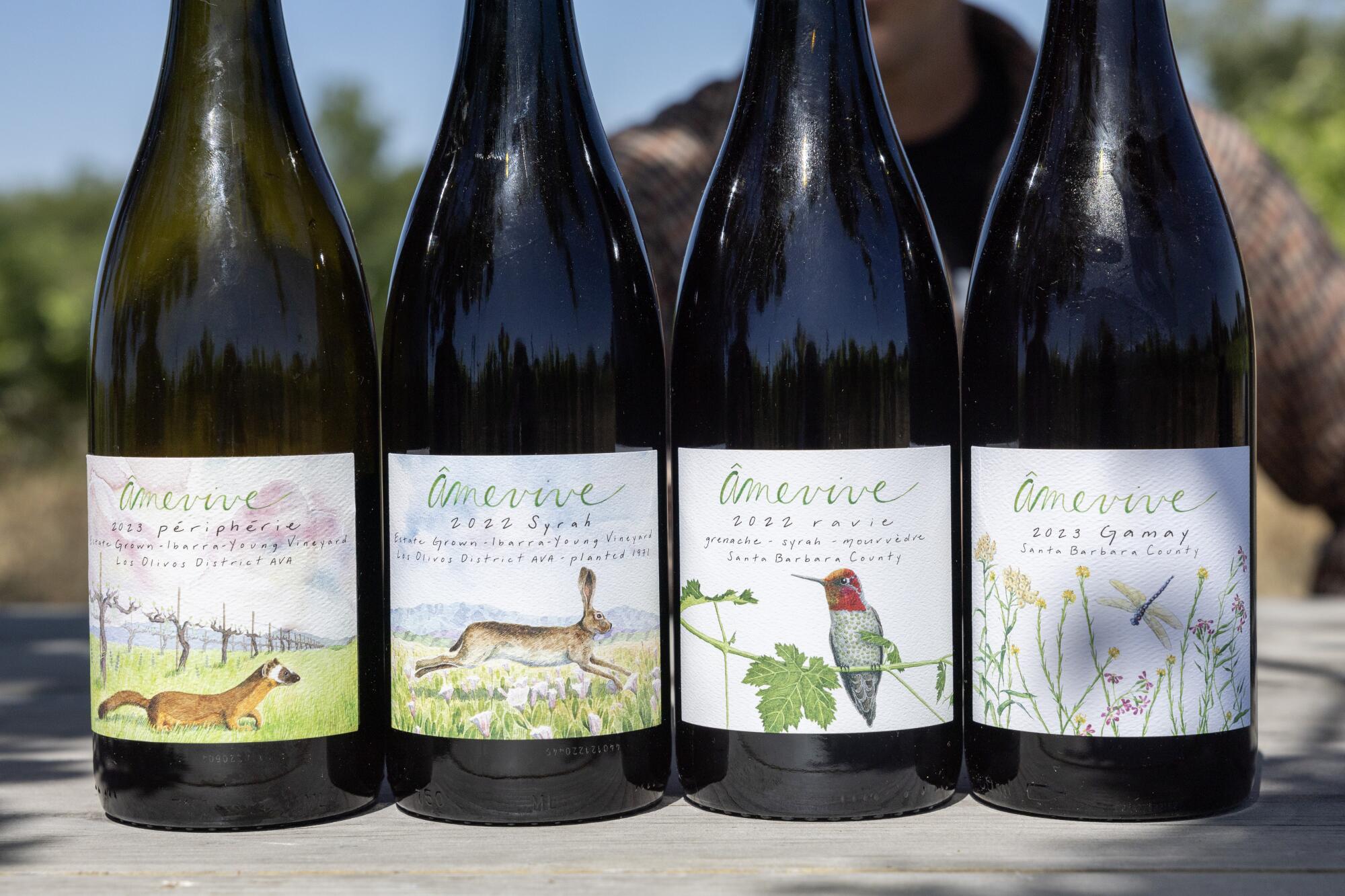
Anderson and De Felice make wine under the label Âmevive, a quirky mash-up of words meaning “lively soul.” Recognized by the wine community for its work, Âmevive has appeared on store shelves and wine lists across the country.
The vineyard also has some Spanish grapes that were planted by Lindquist, including “suitcase” tempranillo brought in from the famed Ribera del Duero region. Anderson also buys fruit from a handful of other vineyards in the region to make wine from grape varieties he doesn’t have at Ibarra-Young. These bottlings include a gamay and his first sparkling wine, from the Savoy mondeuse grape. This year, some of the tempranillo will be replaced with white “Rhône” grapes at Ibarra-Young, and a new 8-acre vineyard will be added, also at Los Olivos, which will provide them with more syrah as well as sangiovese and cabernet sauvignon.
Anderson says his wines “should make you feel alive. They should make you feel happy. Because I enjoy every second of what I do. Everything from walking the rows in the vineyard, to moving my sheep, to harvesting at 2 a.m., to managing fermentations for 16 hours straight, to making blending decisions, to bottling, to painting the labels with my mom, to taking photos of the process, to doing a little IT work on the website, to serving at dinner parties.”
Anderson follows this recount of tasks by whispering reflectively, almost to herself: “I'm very lucky.”
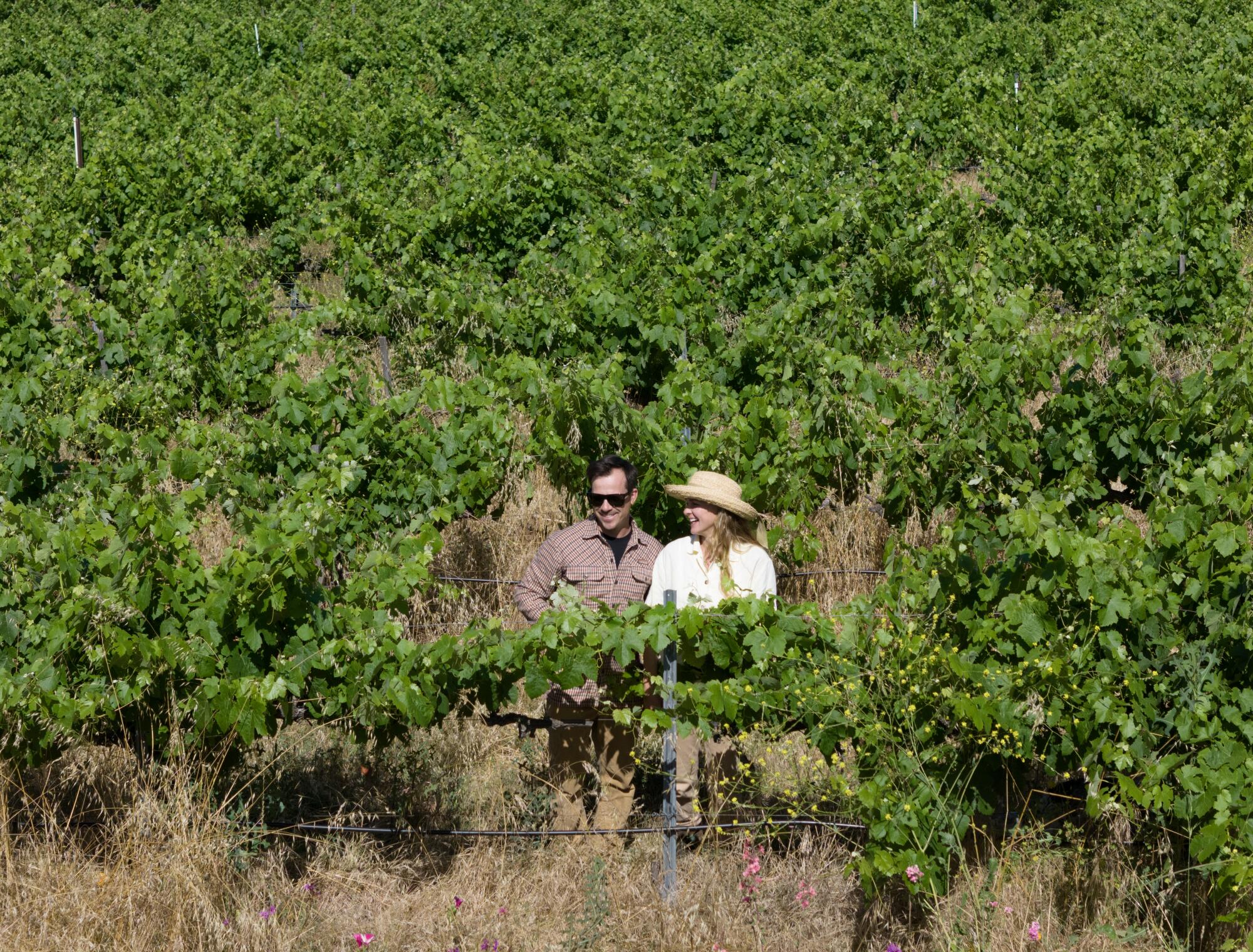
Anderson and De Felice are planning a new 8-acre vineyard, also in Los Olivos, which will provide them with more syrah, as well as sangiovese and cabernet sauvignon.
David Rosoff is a wine expert and writer who has overseen wine programs at several Los Angeles restaurants.

